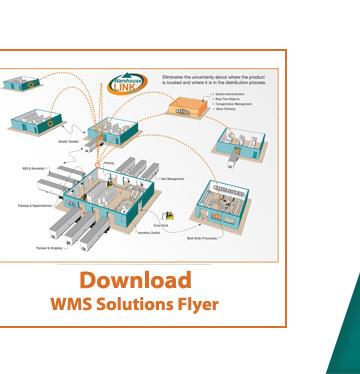WMS Cycle Counts End Physical Inventory Counts
Physical inventory counts in the warehouse are labor-intensive, disruptive, and only accurate for that moment in time when the count occurs. The second that warehouse operations resume, the count is inaccurate and only has historical value. Adding to the agony of physical inventory counting is realizing that it is not just one and done; this process will be repeated 2, 3, 4 and possibly up to 12 times a year! The more time that goes by, the less confidence there is in the count accuracy. One of the main reasons for implementing a WMS (Warehouse Management System) like Warehouse-LINK® is to gain automated cycle count functionality for ongoing, frequent counts performed in real-time. Inventory counts can occur as frequently as needed and even on the fly, without disrupting operations. Automated cycle counting reliably confirms inventory levels by comparing the WMS system count to what is actually on the shelf with the use of mobile computing devices to aid in the count.
Warehouse Strategy
A WMS implementation requires a warehouse strategy involving forethought and planning, which benefits automated cycle counts. Knowing real-time inventory levels leads to more accurate buying decisions, avoids out-of-stock items, frees up inventory space in the warehouse and improves decision-making. Of course, the more frequently a cycle count is performed, the better the accuracy, but, is it necessary to cycle count the whole warehouse at the same levels of frequency? There needs to be a balance between inventory accuracy and labor required to achieve the accuracy.
A common warehouse practice is to count items that are fast movers more frequently than slow moving items. ABC velocity analysis (sometimes referred to as Pareto’s principle) is one method used to identify the fast movers. Pareto’s principle states that 20% of the inventory accounts for 80% of sales. This 20% of inventory represents the A Group of fastest movers. Group B makes up 30% of inventory and accounts for 15% of sales and lastly, Group C, which is 50% of the inventory, accounts for only 5% of the sales. Another level of analysis is XYZ analysis that identifies sales variances – does an item vary in sales demand throughout the year. Using ABC analysis and XYZ analysis together can help identify and predict the fast moving items at certain times of the year. With this information, Warehouse-LINK® can systematically create automatic cycle counting for all items based on the frequency necessity.
Automated Directed Cycle Counts
Warehouse-LINK® utilizes business rules to create a queue process that automates the directed cycle counting into a routine. When an item meets the criteria for a cycle count, the worker receives the direction to cycle count on a mobile computing device (barcode terminal or RF device). Using the mobile computing device, the worker scans the location and item and enters the item quantity. If there is a discrepancy between the count and the number in the system, the worker receives instructions for a re-count for a resolution or adjustment. If the numbers balance, no further action is needed, and the count is confirmed. Because the cycle count updates immediately in the system, there is no hold up on warehouse operations. Using automated directed cycle counting allows for quick reconciliation of discrepancies for real-time accurate inventory information.
On-Demand and Opportunity Cycle Counting
There will be occasions that require a cycle count “on the fly.” Without disruption of warehouse operations, Warehouse-LINK® features on-demand cycle counting for any item at any time. Opportunity cycle counting is simply confirming that a location is empty and the count is zero. It is a fast, easy way to perform a cycle count.
How to put an End to Physical Inventory Counts
Physical inventory counts are an attempt to get real, accurate inventory numbers. However, they are prone to human error and lack the ability to update in real-time. Warehouse-LINK’s® automatic directed cycle count reduces the human error factor and provides real-time inventory accuracy that satisfies the toughest auditors and eliminates physical inventory counts. Contact Interlink Technologies (800-655-5465) for more information on ending physical inventory counts.
For more information on ABC analysis:
https://www.allthingssupplychain.com/how-signore-paretos-peas-can-help-you-count-your-inventory/
http://www.distributiongroup.com/articles/dcm020113we_a.pdf
http://www.apics-redwood.org/articles/art0302BCW.htm








